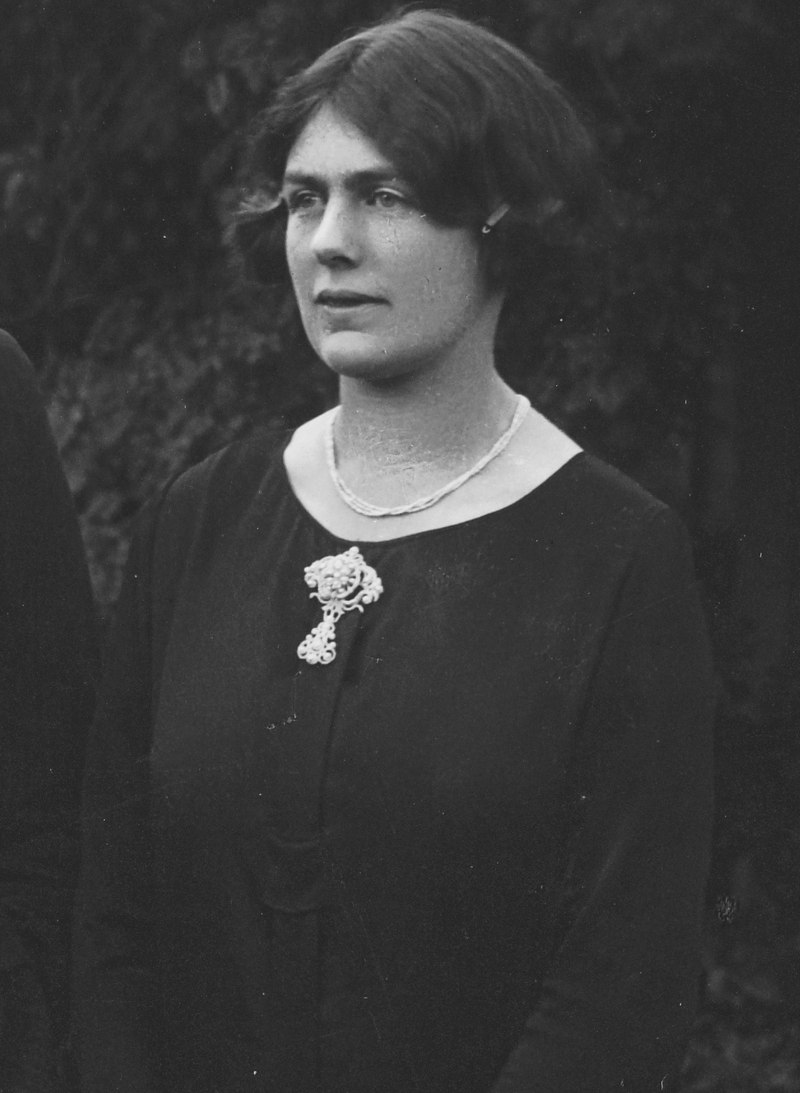Title of the work
Country of the First Edition
Country/countries of popularity
Original Language
First Edition Date
First Edition Details
Joan Lindsay, Picnic at Hanging Rock. Melbourne: Cheshire, 1967, 212 pp.
ISBN
Genre
Detective and mystery fiction
Magic realist fiction
Novels
Target Audience
Young adults
Cover

Audiobook cover by Bolinda Audio (from 2018). Retrieved from brilliancepublishing.com, licensed under Creative Commons Attribution-NonCommercial-NoDerivs 3.0 Unported (accessed: December 15, 2021).
Author of the Entry:
Margaret Bromley, University of New England, mbromle5@une.edu.au
Peer-reviewer of the Entry:
Elizabeth Hale, University of New England, ehale@une.edu.au
Daniel A. Nkemleke, University of Yaounde 1, nkemlekedan@yahoo.com

Retrieved from Wikipedia Commons, public domain (accessed: December 8, 2021).
Joan Lindsay
, 1896 - 1984
(Author)
Joan Lindsay was an Australian author and artist. Born in East St Kilda, Melbourne in 1896, she studied at the National Gallery of Victoria under renowned artists Bernard Hall and Frederick McCubbin. In 1922 while living in London she married fellow artist (Sir) Ernest Daryl Lindsay on Valentine’s Day. After her marriage Lindsay concentrated on writing, contributing articles on art and short stories to newspapers and periodicals. She had a pervading interest in the paranormal and the role of time in people’s lives. Picnic at Hanging Rock is her most well known work.
Bio prepared by Margaret Bromley, University of New England, brom_ken@bigpond.net.au
Adaptations
Peter Weir, dir., Picnic at Hanging Rock (movie), B.E.F. Film Distributors, Australia, 1975.
Paulette Haupt, dir., librettist/lyricist/composer Daniel Zaitchik, Picnic at Hanging Rock (musical), June 27,28, July 1,3 2009, The Eugene O’Neill Theater Center, New York.
BBC Radio 4, Radio adaptation, Fri 17 September 2010. 21:00.
Play, 13, 28 January 2017, Malthouse Theatre and Black Swan State Theatre Co. The Royal Lyceum Theatre, Edinburgh.
T.V. Miniseries, 2018 (unreleased at the time of writing this entry).
Translation
Multiple translations
Summary
The narrative of Picnic at Hanging Rock begins on St Valentine’s Day, 1900, as the pupils of Mrs Appleyard’s College for Young Ladies, set in rural Victoria, Australia, a few miles out of the village in Macedon, exchange anonymous romantic cards and read romantic poetry. Mrs Appleyard, the tyrannical headmistress, loveless and unloveable, receives no cards. The monolithic College, "an architectural anachronism in the Australian bush – a hopeless misfit in time and place," symbolises the repression and restriction of its inhabitants. St Valentine’s Day offers a day of psychological and physical liberty for the girls. As they venture out on the picnic "out of the known dependable present into the unknown future" the seductive aura of Hanging Rock overcomes the unprepared intruding visitors.
A seemingly benign outing turns into a nightmare of mysterious and sinister events when three of the girls, Miranda, Marion and Irma, and one teacher, Miss McCraw, go missing on the Rock,
Hanging Rock offers a pastoral escape from the rigid schedules of college life and the constraints of Victorian feminine attire. Gradually, the signs of European gentility become unravelled as the confining items of female clothing, gloves, hats, stockings and corsets are discarded. The three girls and Miss McCraw all succumb to its spell, the girls "suddenly overcome by an overpowering lassitude," and fall into a deep sleep, where time stands still and watches stop. One girl, Edith, gripped by an irrational and inexplicable panic, escapes the allurement of the rock.
The other picnickers at the rock, Colonal Fitzhubert, his wife and their newchum nephew, Michael, and coachman, Albert, view the girls from a distance.
However, Mike and Albert are deeply affected by the events on the Rock. Thanks to their efforts, Irma is found a week later, her bare feet unblemished but suffering a minor head wound and amnesia that would last for the rest of her life. Mike also suffers a head wound and cannot recall the event.
The disappearance of the two girls and Miss McCraw on the Rock has ramifications throughout the school and community. Mrs Appelyard’s response is to increase her repressive rule on staff and students alike. In particular, she bullies orphaned Sara and teacher Miss Lumley, both of whom were not allowed to go on the picnic, and both of whom perish in sinister circumstances.
There are no answers to the mystery in Picnic at Hanging Rock. There are intriguing coincidences, unresolved relationships and lost opportunities.
Analysis
There is a light classicism that runs through Picnic at Hanging Rock, in which an emphasis on Pan, on the pastoral, and on aspects of love play different roles. Through this, the novel offers a deep reflection on childhood, and particularly the potential of Australian childhood as being different from that of the mother country. Potentially, an Australian childhood can involve cutting the apron strings of English restraint, irrelevant decorum, and class distinction. Mike, the aristocratic newcomer, thinks that this is not at all like England, where everything has happened before. It’s "Australia, where anything might happen."
The landscape plays an important character as it defies domination and control. The girls and their teacher are forever lost in an uncanny timeless space and place, evoked through a reverie or a nightmare of nature or is it Pan’s revenge on those who insist on “civilising” or controlling their young?
Lindsay eschewed time and dates for the setting of her novel, but St Valentine’s Day had intrigued her since childhood. She married Daryl Lindsay on that day in 1922. In her autobiography Time Without Clocks (1962) she describes how she lived for several years without clocks and that any watch that she wore would stop working. In her early writings, she enjoyed exploring the uncanny and the macabre, which she later develops in Picnic at Hanging Rock. Lindsay says that the story came to her in a dream and that she wrote it over a period of two weeks. Lindsay was very familiar with the site of hanging Rock at Mount Macedon, Victoria. As a child, whilst holidaying at Macedon, to escape the summer heat of Melbourne, she frequently went on family picnics to Hanging Rock. She was also inspired by artworks in the National Gallery of Victoria as Daryl Lindsay’s curatorship of Australian art at the NGV saw the acquisition of William Ford’s At the Hanging Rock (1875) as well as Frederick McCubbin’s Lost (1886) and Hanging Rock, Macedon (1912). Children lost in the bush and picnickers depicted as alien figures in a hostile landscape resonate thematically with the novel’s exploration of Australian childhood and European engagement with the Australian bush.
In terms of specifically classical moments, we see an intertwining of Pan, panic, Venus, and, potentially, ancestor spirits of the original inhabitants, as well as an emphasis on eroticism. The day of the novel’s setting, St Valentine’s Day is a pagan festival that has been appropriated by Christian mythology celebrating love and the martyrdom of St Valentine. The St Valentine motif reveals the strong thematic concern with the repressed sexuality of the adolescent girls. Ambiguous homoerotic relationships between Sara and Miranda and Miranda and the well-loved teacher Mademoiselle de Poitiers are inferred. Mlle de Poitiers sees Miranda as “a Botticelli angel,” or Venus, the goddess of love.
Hanging Rock offers a pastoral escape, where the signs of European civilisation and gentility become unravelled. As the confining items of female clothing, gloves, hats, stockings and corsets are discarded, the girls succumb to its spell and fall into a deep sleep. The seductive aura of Hanging Rock overcomes the unprepared intruding visitors as their watches stop and they lose track of time. Do they enter the space of Pan? Pan, the goatlike god of Greek mythology, is playful and energetic. He could be very irritable, especially if disturbed during his afternoon nap. The apparently irrational panic that seizes the girls as they climb the Rock suggests that his peace is disturbed by their trespassing into his (special nap) time and space. However, as white settlers, the girls are also transgressing the timeless land of Hanging Rock.
Lindsay’s novel alludes to the absence of Indigenous people in the country of Hanging Rock. There are no human tracks to follow when the girls climb the Rock “or if there ever have been tracks, they are long since obliterated. It is a long time since any living creature other than an occasional rabbit or wallaby trespassed on its breast” (p. 30). Joan Lindsay did not have deep knowledge of the original inhabitants, or custodians, the Wurundjeri, of the area which included the Rock.
Further Reading
Barret, D., “The Mythology of Pan and Picnic at Hanging Rock”, Southerly 42.3 (1982): 299–308.
Barratt, D., “Picknicking with E.M. Forster, Joan Lindsay et al”, Linq 15 (1987): 79–86.
Bushell, M., A Storm in a Tea-cup: The Solution to the Mystery of Hanging Rock, Mermaid Publishing, Corparoo, 1995.
Carr, Annabel, “Beauty, Myth and Monolith: Picnic at Hanging Rock and the Vibration of Sacrality”, The Buddha of Suburbia. Sydney Studies in Religion (2005): 123–131, available online (accessed: 5.10.2020).
Hodge, B., and V. Mishra, Dark Side of the Dream: Australian Literature and the Postcolonial Mind, Allen and Unwin: North Sydney, 1990.
Kirkby, J., “Old Orders, New Lands: the Earth Spirit in Picnic at Hanging Rock”, Australian Literary Studies 8.3, (1978).
Lindsay, J., Time Without Clocks, Penguin, Harmondsworth, 1976.
O’Neill, T., “Joan Lindsay: a Time for Everything”, The La Trobe Journal 83 (1999): 42–52.
Pierce, P., The Country of Lost Children, An Australian Anxiety, Cambridge University Press, Melbourne, 1999.
Rattigan, N., “Picnic at Hanging Rock” in Images of Australia; 100 Films of the New Australian Cinema, Southern Methodist University Press, Dallas, 1991.
Steele, K., “Fear and Loathing in the Australian Bush: Gothic Landscapes in Bush Studies and Picnic at Hanging Rock”, (2010), colloquy.monash.edu.au (accessed: March 30, 2017).
Taylor, J., Y. Rousseau, The Secret of Hanging Rock. Angus and Robertson, London. (Includes the previously unpublished Chapter Eighteen and commentary by Yvonne Rousseau), 1987.
Addenda
In 1987, after her death, the final chapter of Picnic at Hanging Rock was published. Lindsay had been persuaded that this chapter should be omitted from the original publication. The chapter offers a flashback to the moment when Edith, hysterical is running back to the picnic area, whilst Miranda, Irma and Marion are still under the spell of the Rock. The figure of a woman, clad only in her underwear, appears climbing the Rock, then faints. Unrecognised by the girls, the story suggests that it is Miss McCraw, the teacher who disappears on the Rock. To help revive her, Miranda loosens her corset. Subsequently, the girls remove their own corsets, which they discard over the precipice, yet the corsets defy gravity and remain suspended in mid-air. The girls and Miss McCraw disappear through a crack in the Rock, Miss McCraw is transformed into a crab-like creature. Irma has prevented entry by a boulder that blocks the passage. She is last seen “tearing and beating at the gritty face of the boulder with her bare hands”.


